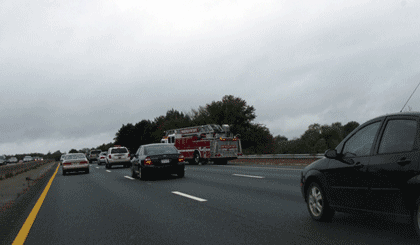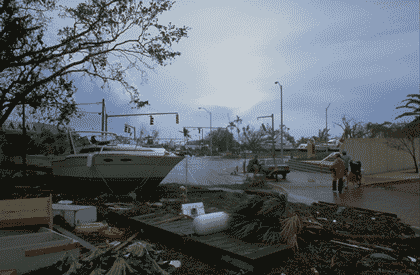Role of Transportation Management Centers in Emergency Operations Guidebook
Executive Summary
The purpose of this guidebook is to increase communication, collaboration, and cooperation among Transportation Management Centers (TMC) and emergency response agencies so they can effectively respond to a variety of situations ranging from a localized traffic incident to major regional events such as hurricane evacuations. A description of TMC functions and resources relevant to emergency operations is included followed by sections describing the activities that take place during emergency operations, including pre-event, response and recovery, and post event.
The guidebook opens with a description of how TMCs currently support emergency response such as reporting on traffic conditions, and assessing transportation system damage. The TMCs are well suited to this role because they are the “hub of the transportation management system.” The guidebook also describes the various TMC preparedness activities that can help when an emergency occurs including detection and verification of incidents, dissemination of information, assistance with incident response, on-scene management, traffic control, coordination with maintenance activities, mapping and GIS resources, and access to archived historical data.

Source: Cambridge Systematics, Inc.

Source: Digital Stock, a division of Corbis Corporation.
During an emergency, it is important to utilize an Incident Command System (ICS), which is a standardized, all-hazards incident management approach that provides the integration of facilities, equipment, personnel, procedures, and communications that operate within a common organizational structure. The guidebook describes how TMCs can benefit from learning and utilizing ICS, and recommends TMCs conduct strategic-level actions on preparedness and resource management (planning, training, personnel, and equipment certification) to improve support to emergency response agencies in a way that is consistent with ICS.
Even though most emergency operations centers (EOC) are temporary, an entity like a TMC that is permanently in place can provide support because they have access to established and widespread cameras, sensors, and communications networks. The guidebook describes how these and other functions can help during small- and large-scale traffic incidents, planned events, and large-scale regional emergencies. For instance, the TMC can detect a traffic event and issue appropriate notifications to the public. During large-scale emergencies, like a hurricane, the TMC can facilitate evacuations by suspending highway work or projects on evacuation routes and providing equipment and personnel resources to assist in the staffing and implementation of evacuation traffic control points.
In some cases, a TMC and EOC co-locate which provides backup power, communications, and sheltering requirements that allow the TMC to continue operating during adverse conditions. Other EOCs are virtual, and use video/voice conferencing, and file sharing servers as a way to coordinate activities. Both approaches are described in the book.
Because emergencies usually occur with little or no warning, it is important for TMCs to prepare in advance through planning, training, and practice. The guidebook describes these "pre-event" activities including establishing an emergency preparedness working group; performing a needs assessment; and developing a TMC Emergency Operations Plan (EOP) and Standard Operating Procedures (SOP). Other activities include the development of a comprehensive preparedness guide and a Continuity of Operations Plan. The TMC Emergency Operations Plan can be an extensive document and the guidebook walks through each of the recommended elements which include the following:
- Purpose and Scope;
- Situation Overview and Planning Assumptions;
- Concept of Operations (ConOps);
- Organization and Assignment of Responsibilities;
- Direction, Control, and Coordination;
- Interagency Coordination for Planned Special Events;
- Information Collection and Dissemination;
- Communication;
- Administration, Finance, and Logistics;
- Plan Development and Maintenance;
- Authorities and References; and
- Additional Planning and Coordination Functions.
Training for TMC personnel and joint training with emergency responders and others are also helpful. The guidebook describes the various types of training currently available and recommends TMCs develop a training plan to ensure all relevant personnel have the necessary information and skills.
Once the emergency or event occurs, the TMCs can move into the response and recovery phase. The guidebook describes the various relationships and provides descriptions of the TMC role in these activities in three different situations, including traffic incidents (minor and large-scale), large-scale emergencies, and planned special events.
During the response phase, TMCs can implement their operating procedures, which identify the personnel to staff an emergency, and notification procedures. Other response activities in the guidebook include the use of the TMC camera system, and media relations. Because emergencies are not all the same, the guidebook describes the various operational (response and recovery) responsibilities for TMCs during emergency events.
The final chapter of the guidebook describes the various post event activities including recovery, after-action assessments, and how to improve planning functions. An important role for TMCs is to help departments of transportation identify roadway restoration and infrastructure repair. TMCs can also play a critical role in after-action assessments that allow all participants to review what happened and how operations can be improved in the future.
In addition to a wealth of the information, the guidebook includes practical checklists for each section that allow a TMC to evaluate their current support for support emergency operations and identify areas for improvement.
The checklists provided are intended for use by TMC personnel to self-evaluate:
- The level of cooperation they have achieved with emergency management and response personnel; and
- The level of expertise they have developed to participate in emergency response activities.
Checklists can be used to provide an overall assessment, identify areas in which TMCs want to improve, or identify specific priority actions. The order in which the check boxes are listed in this document does not imply any priority.